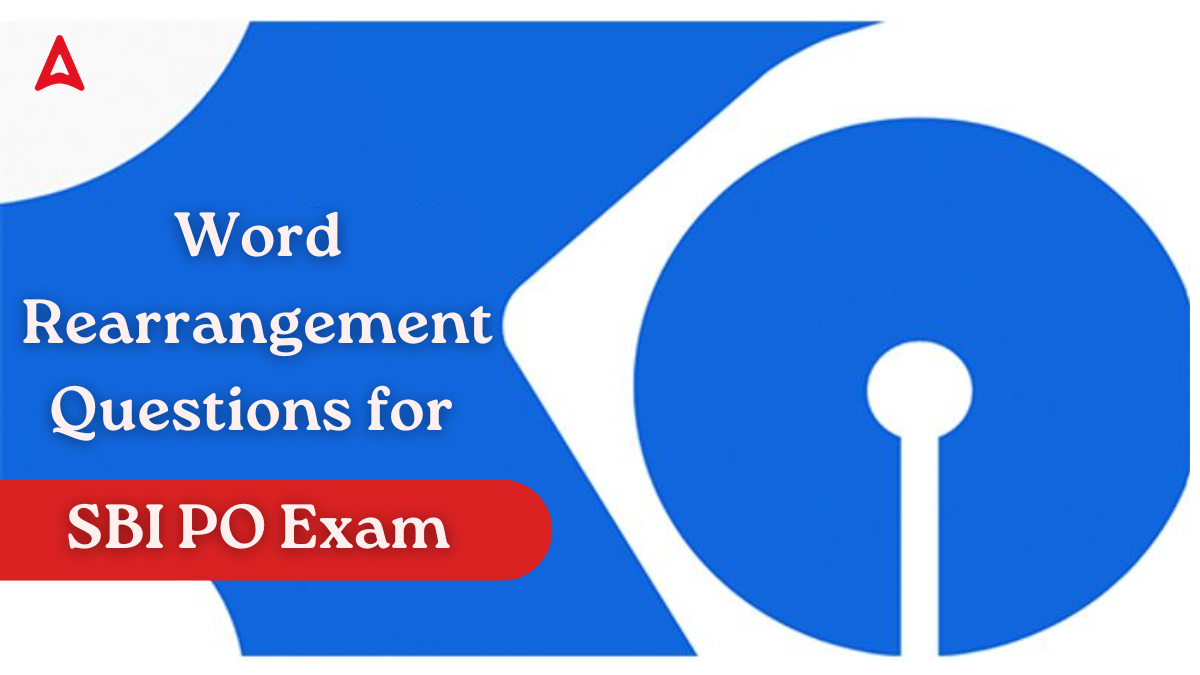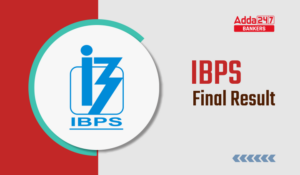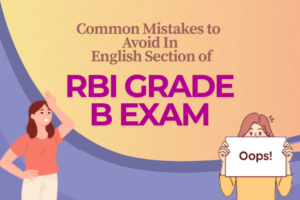Table of Contents
The SBI PO 2025 Notification is out, and candidates must now focus on essential topics to strengthen their preparation. With the SBI PO Prelims Exam 2025 set for 8 and 15 March 2025, this is the perfect time to refine your skills. To assist in your preparation, we have compiled a set of Word Rearrangement Questions for the SBI PO Exam, aimed at helping you perform well in both the Prelims and Mains stages.
Word Rearrangement Questions for SBI PO Exam
The word rearrangement section in the SBI PO 2025 exam is important for evaluating your ability to arrange words or phrases into sequential sentences. This section often presents challenges related to sentence construction, testing your logical reasoning and linguistic skills. To help you prepare effectively, we have created a set of word rearrangement questions with detailed solutions, helping you strengthen your understanding and improve your performance in this area.
Q1. In the question below, a sentence has been given with four highlighted words. These highlighted words may not be in their correct positions. Find out the correct rearrangement of the highlighted words to make the sentence grammatically correct and contextually meaningful. If all the words are in their correct position, then select option ‘No rearrangement required’ as answer.
Not only has daily testing numbers reluctant (A) sharply, people have become dropped (B) to get obvious (C) even when symptoms are tested (D).
(a) CDBA
(b) ABDC
(c) BADC
(d) BCAD
(e) No rearrangement required
Q2. In the question below, a sentence has been given with four highlighted words. These highlighted words may not be in their correct positions. Find out the correct rearrangement of the highlighted words to make the sentence grammatically correct and contextually meaningful. If all the words are in their correct position, then select option ‘No rearrangement required’ as answer.
The savings (A) from old and inefficient (B)ACs to new ones significantly (C) impacts the cumulative energy transition (D).
(a) CDBA
(b) ABDC
(c) BDCA
(d) DBCA
(e) No rearrangement required
Q3. In the question below, a sentence has been given with four highlighted words. These highlighted words may not be in their correct positions. Find out the correct rearrangement of the highlighted words to make the sentence grammatically correct and contextually meaningful. If all the words are in their correct position, then select option ‘No rearrangement required’ as answer.
Toxicological properties in food are not harmful (A) unless we are exposed (B) to them for a levels (C) time and at high long (D).
(a) CDBA
(b) ABDC
(c) BDCA
(d) BCAD
(e) No rearrangement required
Q4. In the question below, a sentence has been given with four highlighted words. These highlighted words may not be in their correct positions. Find out the correct rearrangement of the highlighted words to make the sentence grammatically correct and contextually meaningful. If all the words are in their correct position, then select option ‘No rearrangement required’ as answer.
Give yourself a/an chaotic (A) from the break (B) life of metro cities, by unaffected (C) to areas that are travelling (D) by urbanisation.
(a) BADC
(b) ABDC
(c) DBCA
(d) BCAD
(e) No rearrangement required
Q5. In the question below, a sentence has been given with four highlighted words. These highlighted words may not be in their correct positions. Find out the correct rearrangement of the highlighted words to make the sentence grammatically correct and contextually meaningful. If all the words are in their correct position, then select option ‘No rearrangement required’ as answer.
The reason for worker accidents is unsafe behaviour (A), particularly factors (B) in the rooted (C) to recognize risk inability (D).
(a) CDBA
(b) ACDB
(c) BDCA
(d) BCAD
(e) No rearrangement required
Q6. A property (A) garden full of breath-taking roses (B) was hidden behind a small wooden (C) door at the back of the secret (D).
(a) BADC
(b) ADCB
(c) DBCA
(d) BACD
(e) No rearrangement required
Q7. When my indubitable (A) lied to me, she enough (B) I was stupid daughter (C) to take her words as thought (D) truth.
(a) CDBA
(b) ABDC
(c) BDAB
(d) DCBA
(e) No rearrangement required
Q8. Unfair (A) comments mistrial (B) in the jury’s presence led to a/an hearing (C) and the start of a new whispered (D).
(a) CBAD
(b) ACDB
(c) DCAB
(d) ADBC
(e) No rearrangement required
Q9. Twenty years ago, no one would (A) have ever imagined (B) that text messaging would be a/an form (C) of discourse(D).
(a) BCAD
(b) CDAB
(c) ADBC
(d) DCBA
(e) No rearrangement required
Q10. Poor impression (A) such as slouching when posture (B) to a/an authority (C) gives the talking (D) that you aren’t listening.
(a) ACBD
(b) BDCA
(c) CADB
(d) DBAC
(e) No rearrangement required
Directions (11-15): In each sentence four words are highlighted and may not arranged in correct order. Choose the order of rearrangement needed between these highlighted words to make the sentence meaningful
Q11. Manufacturers are believe (A)heavily in tablets because they demand (B)the demand for tablets will soon investing (C)laptop supersede (D).
(a) BDCA
(b) CADB
(c) ADBC
(d) BACD
(e) No rearrangement needed
Q12. Although the test answer took (A)only four or five sentences, John required (B) a verbose (C)response that wrote (D)up half the page.
(a) BDCA
(b) CADB
(c) ADBC
(d) BACD
(e) No rearrangement needed
Q13. In order to find out about the history (A)of her family, the young woman departed (B)on an ancestral quest to Spain to locate (C)her distant Spanish relatives (D).
(a) BDCA
(b) CADB
(c) ADBC
(d) BACD
(e) No rearrangement needed
Q14. If you want to buy a cheap camera, look for one that has a minor defect or purchase (A)because you can discounted (B)cameras of this aberration (C)at sort (D)prices.
(a) BDCA
(b) CADB
(c) ADBC
(d) BACD
(e) No rearrangement needed
Q15. Before the church leader storm (A)the children from Sunday School class, he gave a dismissed (B) for their safe travels during (C)the benediction (D).
(a) BDCA
(b) CADB
(c) ADBC
(d) BACD
(e) No rearrangement needed
Directions (16-20): In each question, four words are given in bold, which are not arranged in correct order. Choose the rearrangement needed between the highlighted words to make a meaningful and correct sentence.
Q16. We cannot protects (A)the world’s biological nurture (B)unless we diversity (C)the human diversity that save (D)and develops it.
(a) DBAC
(b) BCAD
(c) ACDB
(d) DCBA
(e) No rearrangement needed
Q17. Recent events seem (A)less serious (B)when put into a/an international (C) perspective (D).
(a) DBAC
(b) BCAD
(c) ACDB
(d) DCBA
(e) No rearrangement needed
Q18. It can be difficult to effectiveness (A)the treatments (B)of evaluate (C)different (D).
(a) ABDC
(b) CADB
(c) ACDB
(d) DCBA
(e) No rearrangement needed
Q19. Keeping hydrated (A)improves the body’s gain (B)to trap and neutralize (C)those microbes before they can ability (D)a foothold.
(a) ACBD
(b) DBAC
(c) ADCB
(d) BADC
(e) No rearrangement needed
Q20. The new current challenging (A)series promises (B)to address rigor (C)issues with freshness and affairs (D).
(a) ACBD
(b) DBAC
(c) ADCB
(d) BADC
(e) No rearrangement needed
Solutions
S1. Ans.(c)
Sol. The correct rearrangement of the given highlighted words is BADC. After rearrangement the sentence formed will be, “Not only has daily testing numbers dropped sharply, people have become reluctant to get tested even when symptoms are obvious.”
reluctant: not wanting to do something because you are not sure it is the right thing to do
S2. Ans.(d)
Sol. The correct rearrangement of the given highlighted words is DBCA. After rearrangement, the sentence formed will be, “The transition from old and inefficient ACs to new ones significantly impacts the cumulative energy savings.”
cumulative: Cumulative means adding together or accumulating over time.
transition: Transition means the process of changing from one state, condition, or form to another. inefficient: Inefficient means not operating or performing in the most effective or productive manner. significantly: Significantly means in a notable or important way.
S3. Ans.(b)
Sol. The correct rearrangement of the given highlighted words is ABDC. After rearrangement, the sentence formed will be, “Toxicological properties in food are not harmful unless we are exposed to them for a long time and at high levels.
S4. Ans.(a)
Sol. The correct rearrangement of the given highlighted words is BADC. After rearrangement, the sentence formed will be, “Give yourself a break from the chaotic life of metro cities, by travelling to areas that are unaffected by urbanisation.”
S5. Ans.(b)
Sol. The correct rearrangement of the given highlighted words is ACDB. After rearrangement the sentence formed will be, “The reason for worker accidents is unsafe behaviour, particularly rooted in the inability to recognize and appropriately respond to risk factors.”
Solutions (6-10): In each of the questions given below four words are given in bold. These words may or may not be in their correct position. Following each sentence four sequences are provided. Select the sequence of the words which will make the given sentence contextually meaningful. If the words are correct at their current positions, then choose ‘no rearrangement required’ as your answer.
S6. Ans.(c)
Sol. The correct sequence is DBCA.
This sentence sets up a fictional scenario of a secret garden containing beautiful roses. It implies that the garden is hidden and only accessible through a small wooden door located at the back of the property, suggesting an air of mystery and exclusivity.
Hence, the correct sentence formed will be “A secret garden full of breath-taking roses was hidden behind a small wooden door at the back of the property.”
S7. Ans.(a)
Sol. The correct sequence is CDBA.
The speaker’s daughter lied to them, but the speaker was aware of the deception and did not believe her. The statement implies that the daughter underestimated the speaker’s intelligence or ability to detect lies.
Hence, the correct sentence formed will be “When my daughter lied to me, she thought I was stupid enough to take her words as indubitable truth.”
S8. Ans.(d)
Sol. The correct sequence is ADBC.
The sentence implies to some comments were made in the presence of the jury that were considered unfair, leading to a mistrial being declared. This resulted in a new hearing being scheduled to ensure a fair trial.
Hence, the correct sentence formed will be “Unfair comments whispered in the jury’s presence led to a mistrial and the start of a new hearing.”
S9. Ans.(e)
Sol. The given sentence is correct and does not require rearrangement.
S10. Ans.(b)
Sol. The correct sequence is BDCA.
The sentence highlights the importance of good posture in communication, particularly when speaking with authority figures. Poor posture, such as slouching, can convey disinterest and lack of engagement, which can give the impression that the listener is not paying attention.
Hence, the correct sentence formed will be “Poor posture such as slouching when talking to an authority gives the impression that you aren’t listening.”
S11. Ans.(b)
Sol. The rearrangement needed between these highlighted words is CADB. Thus, the sentence will be, “Manufacturers are investing heavily in tablets because they believe the demand for tablets will soon supersede laptop demand”
S12. Ans.(a)
Sol. The rearrangement needed between these highlighted words is BDCA. Thus, the sentence will be, “Although the test answer required only four or five sentences, John wrote a verbose response that took up half the page.”
S13. Ans.(e)
Sol. All the highlighted words are rightfully arranged.
S14. Ans.(b)
Sol. The rearrangement needed between these highlighted words is CADB. Thus, the sentence will be, “If you want to buy a cheap camera, look for one that has a minor defect or aberration because you can purchase cameras of this sort at discounted prices.”
S15. Ans.(a)
Sol. The rearrangement needed between these highlighted words is BDCA. Thus, the sentence will be, “Before the church leader dismissed the children from Sunday School class, he gave a benediction for their safe travels during the storm”
S16. Ans.(d)
Sol. The rearrangement needed to make the sentence correct is DCBA. Thus, the sentence will be, “We cannot save the world’s biological diversity unless we nurture the human diversity that protects and develops it”
S17. Ans.(e)
Sol. All the highlighted words are arranged in correct order.
S18. Ans.(b)
Sol. The rearrangement needed to make the sentence correct is CADB. Thus, the sentence will be, “It can be difficult to evaluate the effectiveness of different treatments.”
S19. Ans.(c)
Sol. The rearrangement needed to make the sentence correct is ADCB. Thus, the sentence will be, “Keeping hydrated improves the body’s ability to trap and neutralize those microbes before they can gain a foothold.”
S20. Ans.(b)
Sol. The rearrangement needed to make the sentence correct is DBAC. Thus, the sentence will be, “The new current affairs series promises to address challenging issues with freshness and rigor.”
| Related Posts | |
| SBI PO Cut Off | SBI PO Vacancy Trend of Last 5 Years |
| SBI PO Salary | SBI PO Preparation Strategy |
| SBI PO Exam Date | SBI PO Previous Year Question Papers |
| SBI PO Syllabus | SBI PO Exam Pattern |




 IBPS Final Result 2025 Coming Out Tomorr...
IBPS Final Result 2025 Coming Out Tomorr...
 Simple Tips to Avoid Common Mistakes In ...
Simple Tips to Avoid Common Mistakes In ...
 Important Topics & Shortcuts for IDB...
Important Topics & Shortcuts for IDB...


